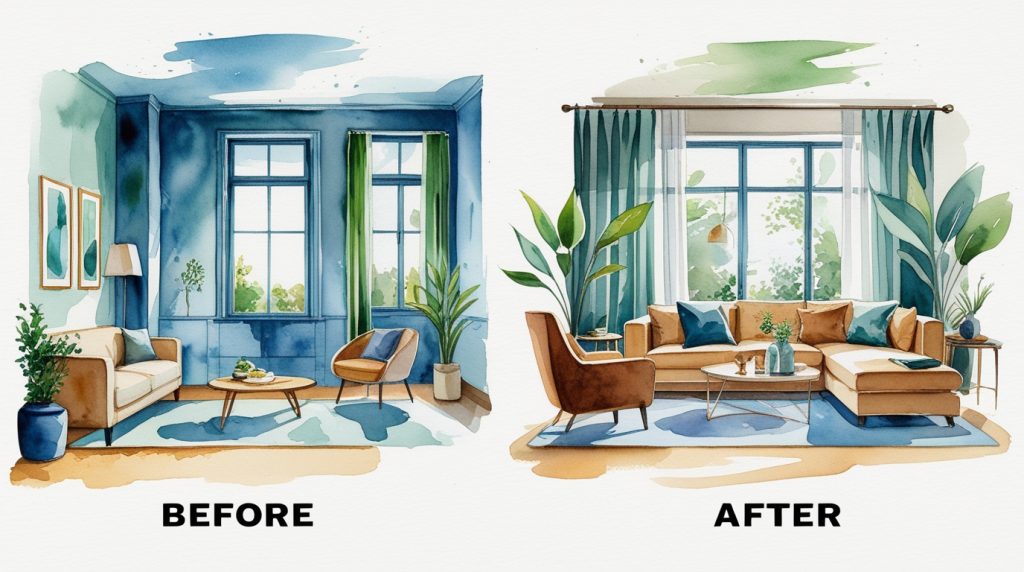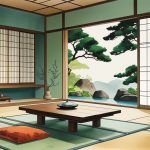As an interior designer, you are an artist engaged with color, light, and fixtures in order to, with their help, be able to create a beautiful space. But in today’s competitive world, being just an artist alone is not enough to present and introduce our work; rather, you must be able to introduce your work to others as well to find new clients.
Perhaps for an artist and designer who has spent their entire life and experience on improving their design work, the task of marketing and finding clients and advertising usually takes up a lot of your time and energy, and the time you could have spent on designing and creative work, you will be forced to dedicate to advertising. Perhaps you wonder what the solution is? In reality, if there were a way for you to entrust a large part of these advertising and marketing tasks to a smart and tireless assistant who could carry out your marketing tasks, it would be fantastic. AI marketing tools for the interior design business do exactly all of this in a completely accurate and faster manner, such that they can change the game in your favor.
In this article, we will tell you exactly how AI and its tools help you, and in this article, we will not just introduce a simple list of tools, but this article will deeply examine content creation for social networks, which helps you no longer have to spend hours thinking about writing a text (caption) for Instagram, and this is the job of the AI tool, which can write texts for you in a few seconds, or we will tell you tricks so you can fully learn customer acquisition through Google to have your website seen higher in Google search, and clients can easily find you.
Of course, we shouldn’t forget the main topic of this article, which is 3D designs, where you can create various types that you have in mind in 3D in the fastest time and show them to the client. In summary, AI tools have been able to perform the hard and time-consuming tasks of marketing faster and smarter than the traditional method, and this way you can focus more and better on the work you love, which is designing and creating beautiful spaces.
Contents
- 1 Why Does Your Interior Design Business Need AI Marketing?
- 2 Key Applications of AI in Interior Design Marketing
- 2.1 Smart and SEO-Optimized Content Generation: Your Tireless Writer
- 2.2 Marketing on Social Networks: From Idea Generation to Performance Analysis
- 2.3 3D Visualization and Rendering with the Power of AI: Marketing Before Execution
- 2.4 Personalizing Customer Experience and Communications Management (CRM)
- 3 Introducing the Newest and Best AI Marketing Tools for Interior Designers
- 4 Challenges and Ethical Considerations: A Realistic Look
- 5 What Happens Next? AI and the Evolution of the Interior Design Profession
- 6 Summary and Next Steps
- 7 What’s Your Opinion?
- 8 Frequently Asked Questions (FAQ) That Might Be on Your Mind
- 8.1 Is AI going to take the place of interior designers and make us jobless?
- 8.2 These tools seem very expensive, is it really worth it for a freelance designer or a small business?
- 8.3 Where should I start? All these tools are really confusing
- 8.4 How can I use AI without my work looking like everyone else’s and being repetitive?
Why Does Your Interior Design Business Need AI Marketing?
It’s natural to ask why my business has been working with the traditional method for years and has been successful, so why should I go to AI? This question is completely logical, but it is better to know that today’s world has changed a lot, and the ways your client finds you are no longer like the past, because today, before clients contact you, they have seen your work samples on Instagram and Pinterest, and if you have a website, they fully examine it, and perhaps they have even visualized the essential furniture and elements related to interior design in their own home using an application.
9 Amazing AI Tools That Will Transform the Future of Your Business
Designers who think about the survival and growth of their business must update themselves with the modern world, and using AI tools is not a luxury choice but a practical necessity for every designer to get ahead of their old and new competitors who still work with old and time-consuming methods and be more up-to-date.
AI gives you the possibility to be seen more, such that you can optimize your blog content based on the most accurate keywords potential customers search for, or you can automatically send personalized emails to customers who have visited a specific section of your portfolio.
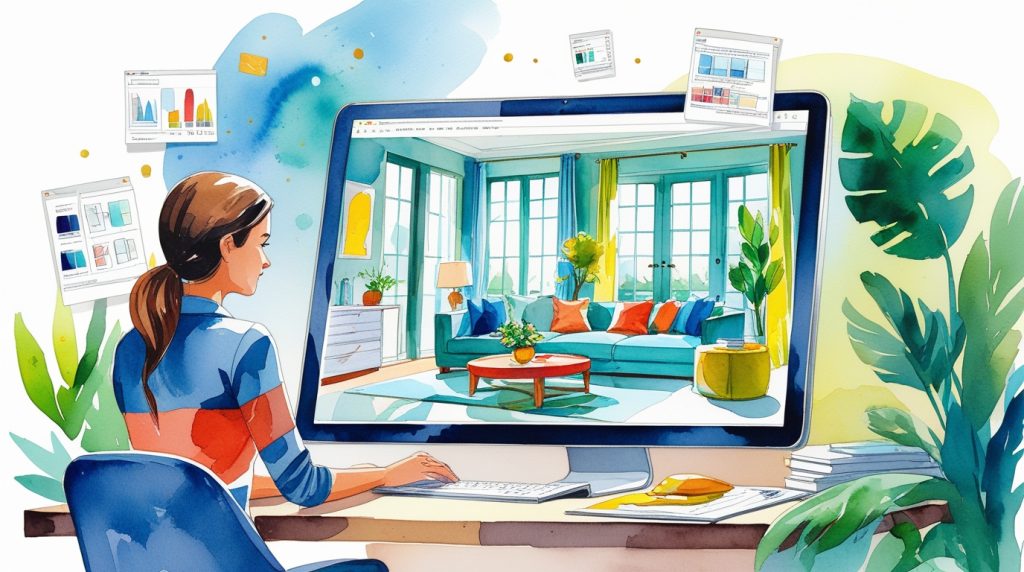
In addition to this, AI helps you gain a deeper understanding of your customers and make customers interested in you, and what styles are more attractive to customers? Which color palettes receive the most likes on social networks? What hours are your customers mostly online? The answer to these questions is almost impossible with manual data analysis, but for AI algorithms, this is as easy as drinking water. Finally, the biggest advantage is your freed-up time. Instead of spending time on repetitive marketing tasks, you can allocate it to more important tasks such as spending time talking and consulting with clients, project management, and most importantly, for your creativity and new designs.
Key Applications of AI in Interior Design Marketing
The applications of AI are so numerous that it is useful in almost all parts of your communication with customers, and now that we know how important this issue is, let’s see how AI can practically help your marketing.
Smart and SEO-Optimized Content Generation: Your Tireless Writer
Continuous success in digital marketing lies in consistent and quality content production, and you should always create good and attractive visual and textual content for your website or blog, project descriptions, and also social networks. Perhaps you think this work is very time-consuming and difficult, and these challenges are the main problems a designer faces, and they don’t know how many articles they should write each week? In reality, solving these problems is in the hands of AI content generation tools like Jasper (Jarvis) AI and Copy.ai, which can generate excellent drafts for you in a few seconds. To generate textual content with the tools, it is enough to give the topic and a few main points to these tools so they can provide you with several different versions of a text, and the job of this tool is not just several words next to each other, but they learn your brand’s tone and have the ability to write texts that have no difference from a text written by a human, professionally.
But it is better to remember that content does not only include text, but SEO (Search Engine Optimization) is also an important and main part of this story, and this work will also be done by AI tools such as SurferSEO or MarketMuse, and their work is such that they first compare your content with the top articles on Google and give you precise suggestions for improving your ranking. For example, this tool will show you what relevant keywords to use, how long the article should be, and what titles will add more appeal to your article. By doing this, you create content that is not only attractive to humans but is also optimized for Google’s algorithms, multiplying your chance of being seen.
Marketing on Social Networks: From Idea Generation to Performance Analysis
Instagram, Pinterest, and LinkedIn are the main showcases for an interior designer’s work, and managing these platforms is a full-time job and takes a lot of time. AI also plays the role of a professional social media manager here, such that image generation tools like Midjourney and DALL-E 3 can help the designer create stunning initial ideas and visual concepts that inspire your posts. Imagine receiving an image of “a Scandinavian minimal style living room with natural light and green plants” with a simple text command (prompt), which you use for getting ideas or sharing with others on social networks. In addition to content generation, AI-powered social media management tools like Later or Buffer can help the designer predict the best time to publish your posts based on your audience’s online behavior. They tell you which hashtags create the most engagement and what type of content (photo, video, reel) performs better, and these smart analyses help you build your strategy based on real data instead of guesswork and achieve the maximum return from your presence on social networks.
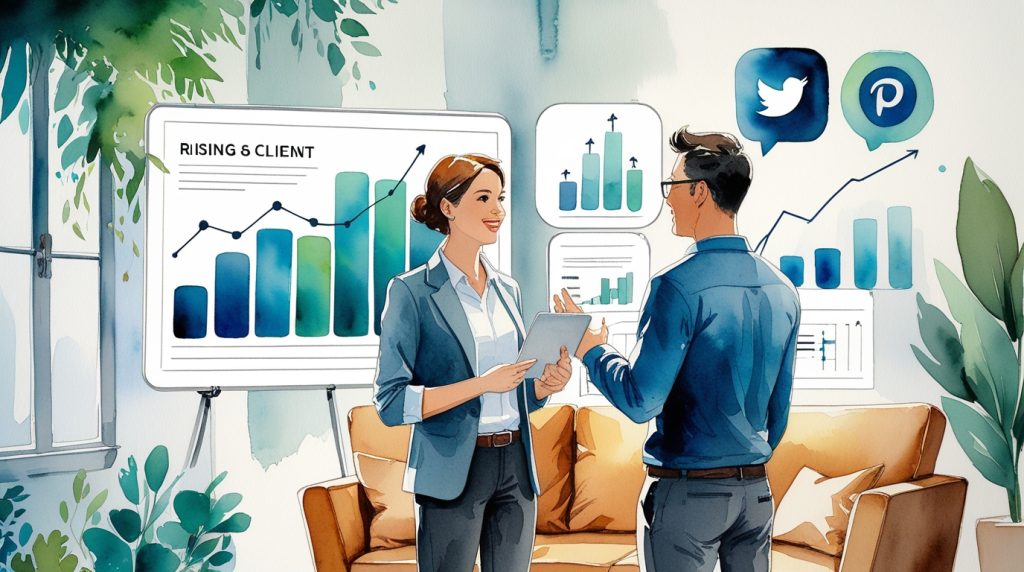
3D Visualization and Rendering with the Power of AI: Marketing Before Execution
Traditionally, creating high-quality 3D renders of home interior designs is a very time-consuming and expensive process that requires complex software and strong hardware, but this part is always one of the most exciting examples of AI integration with the world of interior design, such that AI interior design tools have made this work easy for everyone. Tools like Interior AI, Foyr Neo, and Homestyler allow you to take a photo of an empty room or the interior of your house and give it to the program to show you ten different designs and layouts and decorations with various styles such as modern, classic, or traditional.
These are not just ordinary design tools, but they are referred to as the most influential marketing tools that, before the project starts, you can show your client several realistic versions of the final space design, and this work, in addition to attracting client satisfaction, also gains their trust, and it provides a strong portfolio for displaying visual content on social networks. In addition to this, the designer can use these attractive photos to create “before and after” videos or demonstrate their ability to transform an empty space into a dream location, so that their fast and realistic visualization becomes a winning card for convincing a hesitant client.
Personalizing Customer Experience and Communications Management (CRM)
Has it ever happened to you that you entered a website and felt that all the content and offers were designed exactly for you? This is the power of personalization with AI. For an interior design business, this means more meaningful and closer interaction with every potential customer who is interested in your work. For example, you can use smart chatbots on your website, and these bots can answer visitors’ frequently asked questions (such as price range, work styles, project process) 24 hours a day and collect their initial information.
This not only creates a better user experience and feeling but also filters and categorizes qualified and interested leads for you. In addition to this, AI-equipped Customer Relationship Management (CRM) systems, such as advanced versions of HubSpot, can analyze user behavior on your website. For example, if a user has visited your kitchen design projects page several times, this system automatically places them in the “interested in kitchen design” category, and you can send targeted email campaigns to them showing your latest kitchen projects, and this level of personalization gives the customer a sense of value and significantly increases your conversion rate.
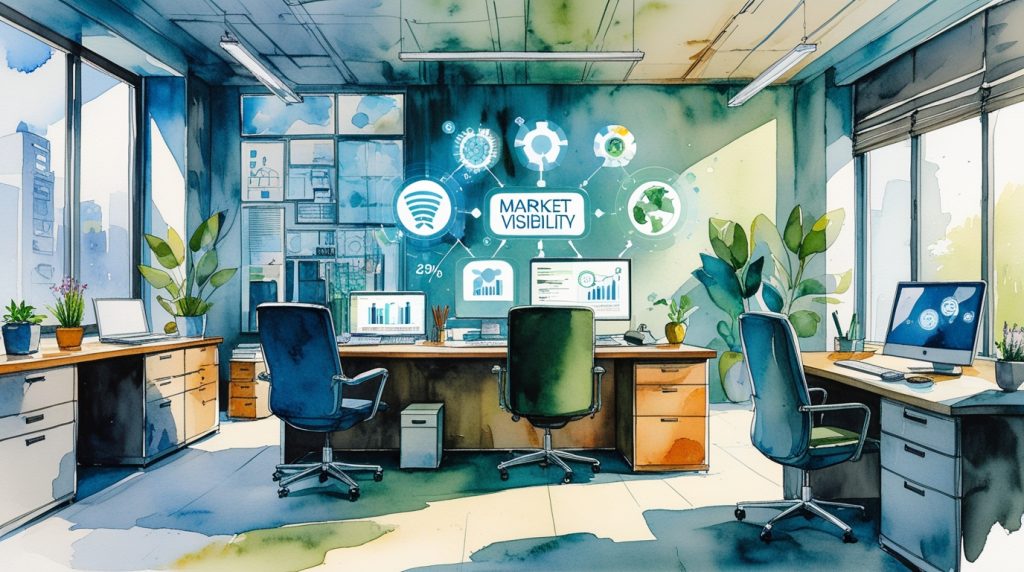
Introducing the Newest and Best AI Marketing Tools for Interior Designers
The world of AI tools is growing and expanding rapidly, and new options are introduced every day. In the table below, we have prepared a list of the best and newest tools that you can use to advertise and market your interior design business.
| Tool Name | Primary Use | Key Feature for Interior Designers |
| Midjourney / DALL-E 3 | Image generation from text | Creating visual concepts, mood boards, and initial ideas for projects and social media content. |
| Jasper.ai / Copy.ai | Text content generation | Quickly writing project descriptions, blog articles, Instagram captions, and ad copy with your brand’s tone. |
| SurferSEO | Content optimization for Google | Analyzing competitors and providing precise suggestions for improving blog article ranking in search results. |
| Interior AI / REimagineHome | Virtual design and layout | Uploading a photo of a space and receiving dozens of different designs and styles in a few seconds; excellent for initial consultation and marketing. |
| Foyr Neo | Complete design and rendering | A comprehensive platform for designing from scratch to 4K renders, which serves as a sales and portfolio display tool. |
| Canva (Magic Studio) | Graphic design and content creation | A set of AI tools for automatically creating social media posts, presentations, and short videos. |
| Later / Buffer (AI Assistant) | Social media management | Suggesting the best publishing time, generating smart captions, and performance analysis for faster growth on platforms. |
| Synthesia / HeyGen | Video creation with an AI avatar | Creating project introduction or educational tip videos without the need for filming, using a digital avatar. |
| Chatfuel / Tidio (AI Chatbots) | Support and lead collection | Automatically answering website visitors’ questions and collecting contact information of potential customers. |
If you put these tools together smartly, you can build an automated content generation machine for yourself. For example, The smart use of a combination of these tools can create an automated and powerful marketing system for you. For example, you can create a beautiful photo or initial design with Midjourney, write an attractive text and caption for it with Jasper, and publish it on Instagram at the best time of day with Later, and just like that, you do a task that took hours in a few minutes.
Challenges and Ethical Considerations: A Realistic Look
AI marketing tools for the interior design business, with all the amazing advantages they give to their users and consumers, it is important to have a more realistic view that using these tools is not without challenges, and the first of these challenges is cost, such that many powerful tools have monthly subscriptions, and to use the services of these tools, we must pay a fixed amount monthly, which of course, compared to the time saving and increase in income it brings, is considered an initial investment for small businesses.
The second challenge that causes user concern is maintaining the authenticity and unique voice of the brand, that if we rely too much on AI-generated content, the output of the work takes on a mechanical or robotic shape and lacks human soul, and the key to success is to use the AI tool as an assistant and a starting point, not a complete replacement for the human writer, because the reader and audience of our writings are human, and if our text lacks a human soul, the user of our writings will notice and will stop reading it, so it is recommended to always review, edit, and personalize the generated content so that it carries your personal signature.
The second challenge is maintaining the authenticity and unique voice of your brand. If you rely too much on AI-generated content, the output of your work might become a bit mechanical and lack that “human soul.” The key to success is to use AI as an assistant and a starting point, not a complete replacement. Always review, edit, and personalize the generated content so that it carries your personal signature.
Finally, the main issue is the originality of the design, that your design must be unique and belong to you, and you should use AI tools as a source for sparks of thought and new ideas, but it is better to be careful not to directly copy your final design from what the AI has created, and it is your creativity and unique perspective as a designer that gives your work real value.
What Happens Next? AI and the Evolution of the Interior Design Profession
Is AI a tool that can replace interior designers? The short and decisive answer is no, because AI is a tool, just as CAD software once replaced drafting tables. AI is not going to replace a designer’s creativity, empathy, and deep understanding of a client’s human needs. Instead, AI will become a “Smart Co-pilot” for designers. Imagine your client walking through your proposed design with a Virtual Reality (VR) headset, and the AI instantly applies changes to the wall color or furniture model based on their verbal reactions, or a smart system that suggests the best and most sustainable materials for the project by analyzing the client’s lifestyle, and these are signs of a deeper integration of new technologies in the near future. The future of this profession will be shaped not in opposition to AI, but in collaboration with it to provide faster, smarter, and more personalized services, and designers who learn today how to use these tools to their advantage will be the leaders of this industry (design) tomorrow.
Summary and Next Steps
Let’s review the key points of this practical and comprehensive article:
- Strategic Necessity: Using AI marketing tools for the interior design business is no longer a choice but a vital competitive advantage for saving time and increasing productivity to create a larger gap between you and your competitors.
- Broad Applications: AI can help you with text and visual content generation, SEO optimization, social media management, 3D rendering, and personalizing the customer experience.
- Powerful Tools: Tools like Jasper, Midjourney, Foyr Neo, and SurferSEO can revolutionize your marketing tasks.
- Maintain Authenticity: Use AI as a smart assistant and always add your final human touch and creativity to the work.
- Bright Future: AI will not replace designers, but will empower them and help the profession evolve.
Based on experience, it is better to choose one area where you have the most challenges. For example, is content creation difficult for you? Start with the free version of Jasper or Copy.ai. Do you want to impress clients with quick visualization? Try one of the AI interior design tools. Go step by step and see how this technology can transform your business, and you don’t have to become an expert in all these tools overnight.
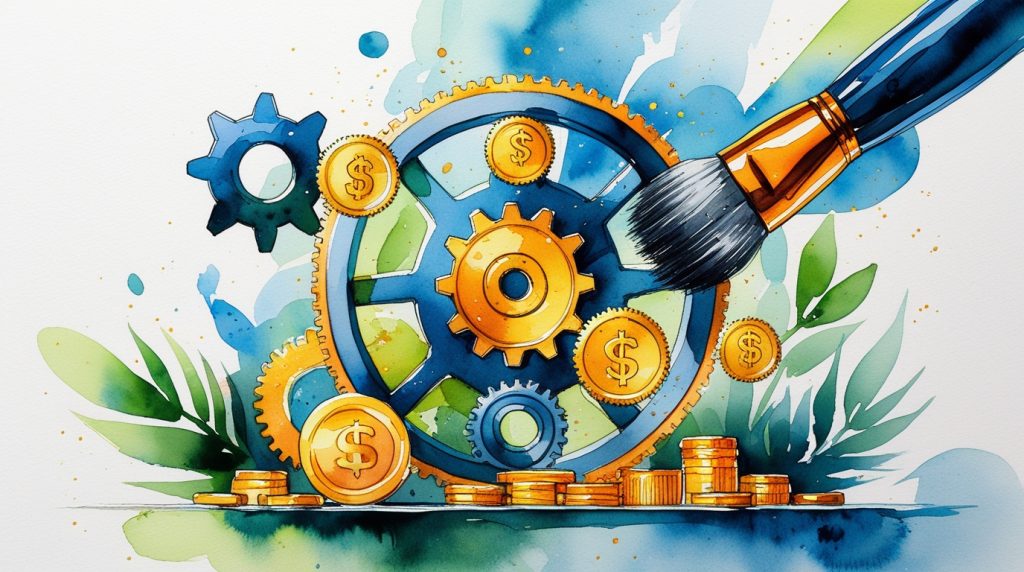
What’s Your Opinion?
We are very curious to hear your experience: Have you ever used AI tools in your interior design business? Which tool has been most useful to you? Share your challenges or successes in the comments section with us and other designers. Your opinions can guide others. If this article was useful to you, please share it with your colleagues and designer friends so that they also become familiar with these new opportunities.
Frequently Asked Questions (FAQ) That Might Be on Your Mind
Reading all this new information may have raised many questions in your mind. Here, we have simply answered a few of the most frequently asked questions that dear designers usually ask us.
Is AI going to take the place of interior designers and make us jobless?
Don’t worry, the answer is a big “No,” because this is the biggest concern and perhaps rumor that exists, and see AI as an incredibly smart and fast assistant, not a competitor. Just as Computer-Aided Design (CAD) software did not replace your drafting skills but only made them faster and more accurate, AI is not going to replace your creativity, taste, empathy, and your ability to understand a real client’s needs. No algorithm can understand the story behind a family’s desire for their home design, and AI is a tool that eliminates repetitive and time-consuming tasks so you have more time to focus on these human and creative aspects.
These tools seem very expensive, is it really worth it for a freelance designer or a small business?
Yes, some of these tools have a monthly subscription, but let’s look at it differently: this is not an “expense” but an “investment.” Calculate how much of your time is spent writing content, brainstorming for posts, or creating initial renders. Now compare the monthly cost of one or two key tools with the salary you would have to pay a marketing assistant or a rendering specialist, and you will realize that AI is a 24-hour assistant at a fraction of that cost. The good news is that many of these tools have a free or trial version (Free Trial) that you can start with, and when you see its positive impact on client acquisition and time saving, you can decide to upgrade.
Where should I start? All these tools are really confusing
Our best advice is: Just start from one point and don’t try to become an expert in 5 different tools at the same time, and think about your biggest current marketing challenge. Do you hate writing captions for Instagram? Then just go to a text generation tool like Jasper or Copy.ai and use its free version. Do you want to quickly show a client a visual idea? Try Interior AI. Take a small step and focus on solving one problem.
How can I use AI without my work looking like everyone else’s and being repetitive?
The secret to success is to consider AI the starting point of your design work, not the end point, because AI is a creative intern that gives you dozens of raw ideas, and your job as a professional designer is to filter these ideas, combine the best ones, and edit them and add your “personal signature” and your own spirit to it. For example, if AI writes a text for your blog, you make it unique by adding a personal experience or a real story from your projects. If it creates an image, use it as inspiration for a color palette or layout, not to copy exactly that.

